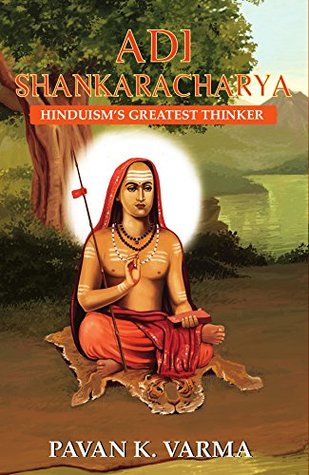More on this book
Community
Kindle Notes & Highlights
Read between
July 3 - August 27, 2018
Shankara was born on the fifth day of the waxing moon in April–May 788 CE.1
Kashi means ‘where the cosmic light concentrates in a circle’.
seeing his unrelenting grief, Vishnu sent the divine chakra and cut Sati’s body into fifty-one parts that fell to the ground.
As per mythology, Sati’s earring fell at Manikarnika, and that is how the ghat got its name. Manikarnika Ghat
Vatsyayana, the author of the Kama Sutra had explained centuries before Shankara, each of the first three goals pursued in proportion, and none in exclusion, leads automatically to the fourth, salvation.
Shankara wrote the Saundarya Lahari, his passionate ode to Shakti, while he lived in this cave.
Shankara’s Advaita, and Kashmir Shaivism, have more similarities than differences. Both are non-dualistic; both believe that Brahman is the only ontological reality; both accept that the world is real at one level but illusory and impermanent at the real level; and, both argue that ignorance is the cause for our mistaking the ephemeral for the real.
Before samadhi, he entrusted the running of the matha to his principal disciple, Sureshvara, better known by his earlier name, Mandana Mishra.
Badrinath was much loved by Shankara. It is believed that the idol of Vishnu, to whom the temple is dedicated, was found by Shankara in the river Alakananda that flows next to the temple.
The aarti at the temple is in Kannada, a language from the state of Karnataka in the south. The idol of Vishnu at Badrinath has no distinguishing features. The head priest there is a Shaiva ascetic from the Nambudiri community of Kerala.
there are about twelve principal Upanishads attached to the Sama, Yajur and Atharva Vedas.
we are both part of it and its manifestation—Tat tvam asi—
The self is the same as Brahman—Ayam atma brahma—the self is Brahman.
Above the senses is the mind, Above the mind is the intellect, Above that is the ego, and above the ego Is the unmanifested Cause And beyond is Brahma, omnipresent, Attributeless. Realizing him one is released From the cycle of birth and death.2
When the five senses are stilled, when the Mind Is stilled, when the intellect is stilled, That is called the highest state by the wise. They say yoga is this complete stillness In which one enters the unitive state, Never to become separate again.
nishkama karma, of action, without attachment or thought of reward, done without selfish desire in a spirit of surrender.
who abandons his duty because he has fear of pain his surrender is of Rajas, impure, and in truth he has no reward. But he who does holy work, Arjuna, because it ought to be done, and surrenders selfishness and thought of reward, his work is pure, and is peace.
Until the influence of Purusha, Prakriti, representing the ‘potentiality of nature’6 lies latent,
Sattva stands for that which is pure; rajas signifies energy and activity; and tamas connotes inertia and stolidity.
Yogah chitta vrittih nirodha:
Brihaspati and the Charvaka school predated Marx—who famously said that religion is the opium of the masses—by over a millennium and a half.
Panini wrote the Ashthadhyayi, the foundational treatise on Sanskrit grammar. In the second century BCE, Patanjali wrote his Mahabhashya or ‘Great Commentary’ on the Ashthadhyayi.


